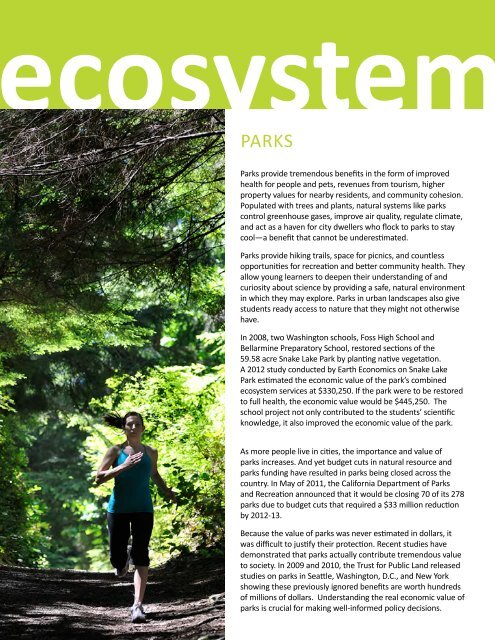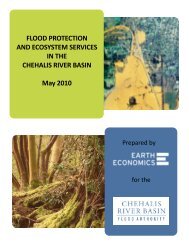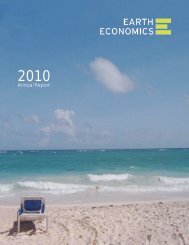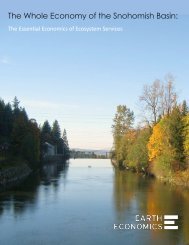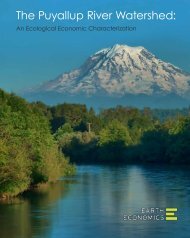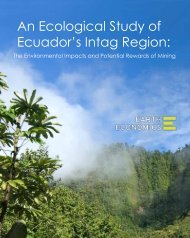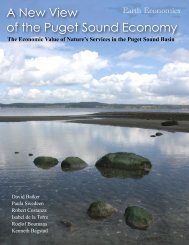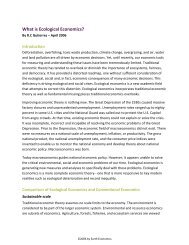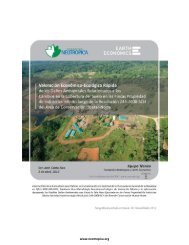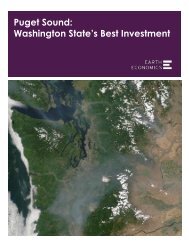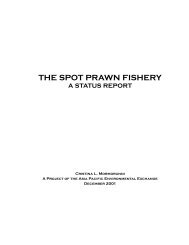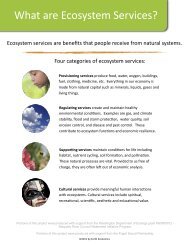A Handbook for Understanding Natural Capital - Earth Economics
A Handbook for Understanding Natural Capital - Earth Economics
A Handbook for Understanding Natural Capital - Earth Economics
You also want an ePaper? Increase the reach of your titles
YUMPU automatically turns print PDFs into web optimized ePapers that Google loves.
cosystem<br />
PARKS<br />
Parks provide tremendous benefits in the <strong>for</strong>m of improved<br />
health <strong>for</strong> people and pets, revenues from tourism, higher<br />
property values <strong>for</strong> nearby residents, and community cohesion.<br />
Populated with trees and plants, natural systems like parks<br />
control greenhouse gases, improve air quality, regulate climate,<br />
and act as a haven <strong>for</strong> city dwellers who flock to parks to stay<br />
cool—a benefit that cannot be underestimated.<br />
Parks provide hiking trails, space <strong>for</strong> picnics, and countless<br />
opportunities <strong>for</strong> recreation and better community health. They<br />
allow young learners to deepen their understanding of and<br />
curiosity about science by providing a safe, natural environment<br />
in which they may explore. Parks in urban landscapes also give<br />
students ready access to nature that they might not otherwise<br />
have.<br />
In 2008, two Washington schools, Foss High School and<br />
Bellarmine Preparatory School, restored sections of the<br />
59.58 acre Snake Lake Park by planting native vegetation.<br />
A 2012 study conducted by <strong>Earth</strong> <strong>Economics</strong> on Snake Lake<br />
Park estimated the economic value of the park’s combined<br />
ecosystem services at $330,250. If the park were to be restored<br />
to full health, the economic value would be $445,250. The<br />
school project not only contributed to the students’ scientific<br />
knowledge, it also improved the economic value of the park.<br />
As more people live in cities, the importance and value of<br />
parks increases. And yet budget cuts in natural resource and<br />
parks funding have resulted in parks being closed across the<br />
country. In May of 2011, the Cali<strong>for</strong>nia Department of Parks<br />
and Recreation announced that it would be closing 70 of its 278<br />
parks due to budget cuts that required a $33 million reduction<br />
by 2012-13.<br />
13<br />
Because the value of parks was never estimated in dollars, it<br />
was difficult to justify their protection. Recent studies have<br />
demonstrated that parks actually contribute tremendous value<br />
to society. In 2009 and 2010, the Trust <strong>for</strong> Public Land released<br />
studies on parks in Seattle, Washington, D.C., and New York<br />
showing these previously ignored benefits are worth hundreds<br />
of millions of dollars. <strong>Understanding</strong> the real economic value of<br />
parks is crucial <strong>for</strong> making well-in<strong>for</strong>med policy decisions.


